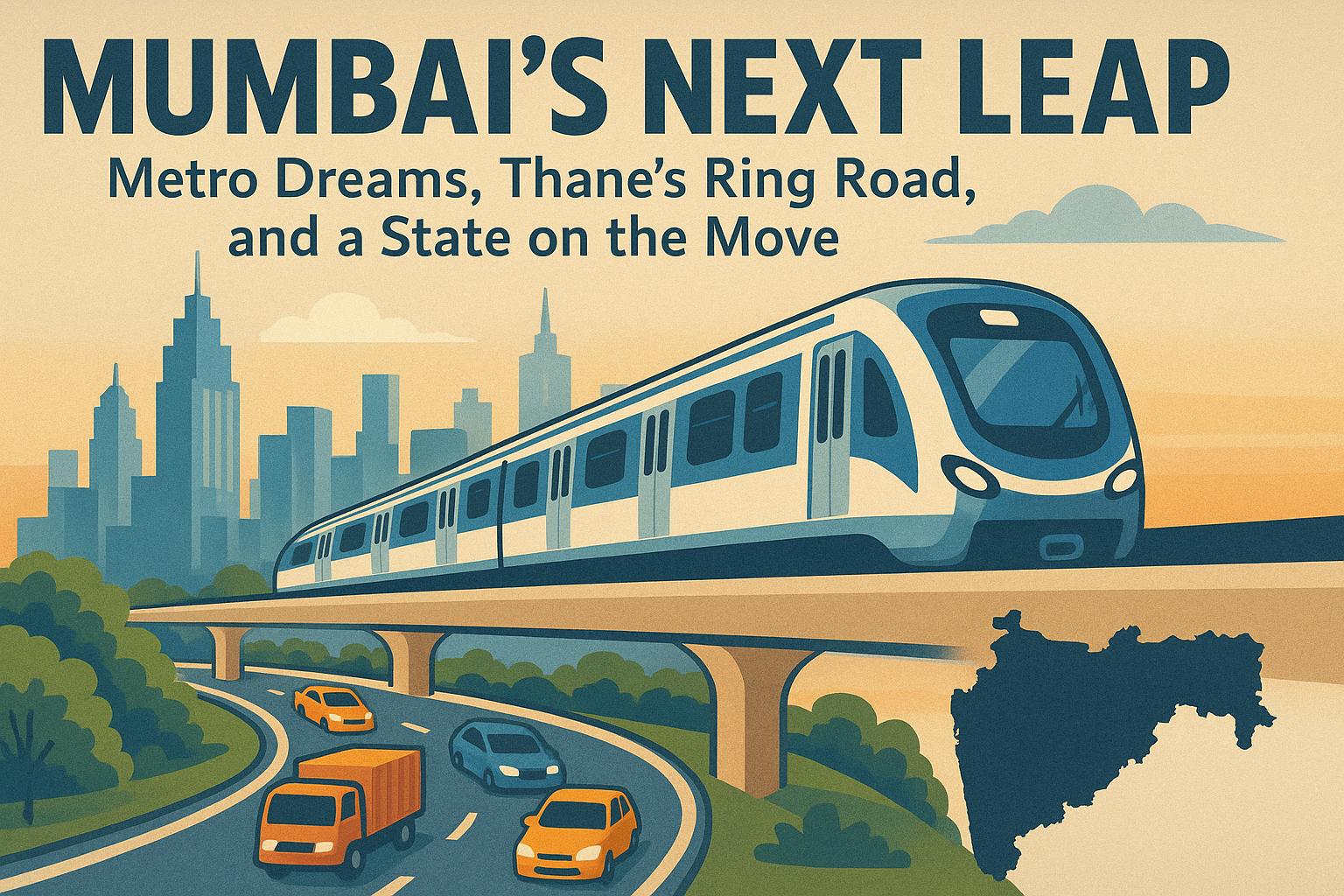
Mumbai’s Next Leap: Metro Dreams, Thane’s Ring Road, and a State on the Move
Infrastructure is not just about steel and concrete; it is about ambition and imagination. Maharashtra’s cabinet has given us both this week, approving a series of projects that will redraw the mobility map of Mumbai, Thane, Pune, and Nagpur. If executed well, these investments could reduce commute time, ease urban pressure, and offer millions of citizens a better quality of life.
The headline-grabber is, of course, Mumbai Metro Line-11—a ₹23,487 crore corridor linking Wadala to the iconic Gateway of India. At 17.5 kilometers, this stretch is not merely about adding more kilometers of metro track; it is about stitching together disconnected corners of Mumbai’s transport ecosystem. With links to Metro 3 (the Aqua Line), Metro 4, the Monorail, and suburban stations like Byculla and CSMT, Line-11 is an exercise in integration. For a city long defined by its suburban trains, the metro is slowly emerging as its nervous system.
But the Mumbai story does not end there. Across the creek in Thane, the state has given the green signal to a 29-km circular metro, priced at ₹12,200 crore. Circular routes are not just a matter of convenience; they reflect a deeper urban logic. Thane is no longer a satellite city—it is a city in its own right, with population pressures and economic ambitions that rival Mumbai’s. Backed strongly by Deputy Chief Minister Eknath Shinde, the ring metro is both a political statement and a practical necessity.
If metros are the arteries of the future, roads remain their backbone. The state has also approved a 25-km elevated road connecting Thane and Mira-Bhayander to the upcoming Navi Mumbai International Airport. The ₹6,430 crore project, with six interchanges, promises to cut travel time from 90 minutes to 30 minutes. For a region that often feels like a victim of its own sprawl, such infrastructure is the difference between aspiration and frustration.
Pune, too, is on the map. The cabinet cleared the long-awaited third and fourth rail lines between Pune and Lonavala, at an investment of ₹5,100 crore. Anyone who has battled congestion on this corridor knows that extra tracks are not a luxury—they are oxygen. Beyond easing travel, they also promise to deepen the Pune–Mumbai economic corridor, already one of India’s most vibrant.
The cabinet’s approvals don’t stop with big-ticket items. Extensions to Pune and Nagpur Metro lines, new sub-corridors in Pune, and an international business hub in Nagpur reflect a broader philosophy: development cannot be a one-city story. By pushing projects in multiple regions, the state signals that infrastructure must be inclusive, not just impressive.
What makes this infrastructure push noteworthy is not just its scale but its timing. Maharashtra, like most of India, is experiencing rapid urbanization. Cities that were once manageable towns are now bursting at the seams. Commuting is no longer just about moving from point A to B; it is about dignity, productivity, and quality of life. Every extra hour spent in traffic is an hour stolen from work, family, or leisure.
Of course, ambition must be matched by execution. Maharashtra has no shortage of announcements; its challenge has always been delivery. Land acquisition, environmental clearances, cost overruns, and coordination between agencies can often slow projects down. The difference between a blueprint and a bulldozer is execution discipline—and citizens will be watching closely.
Still, there is reason for cautious optimism. Mumbai’s metro network, once dismissed as a pipe dream, is now expanding visibly. Nagpur’s metro, though smaller in scale, is running and expanding. Pune’s corridors, despite delays, are progressing. With political will at the state level and an electorate increasingly impatient for results, the incentives for execution are strong.
The larger lesson here is that infrastructure is destiny. Cities that build for the future attract investment, talent, and innovation. Those that don’t, stagnate. Maharashtra’s cabinet this week has chosen the path of ambition. If its projects move from paper to pavement, the payoff will not just be shorter commutes but stronger cities, happier citizens, and a more competitive state.
The story of Maharashtra’s metros, roads, and rails is ultimately the story of India’s urban future: messy, ambitious, expensive, but necessary. Progress may be slow, but it is happening—and that, in itself, is a reason to cheer.





